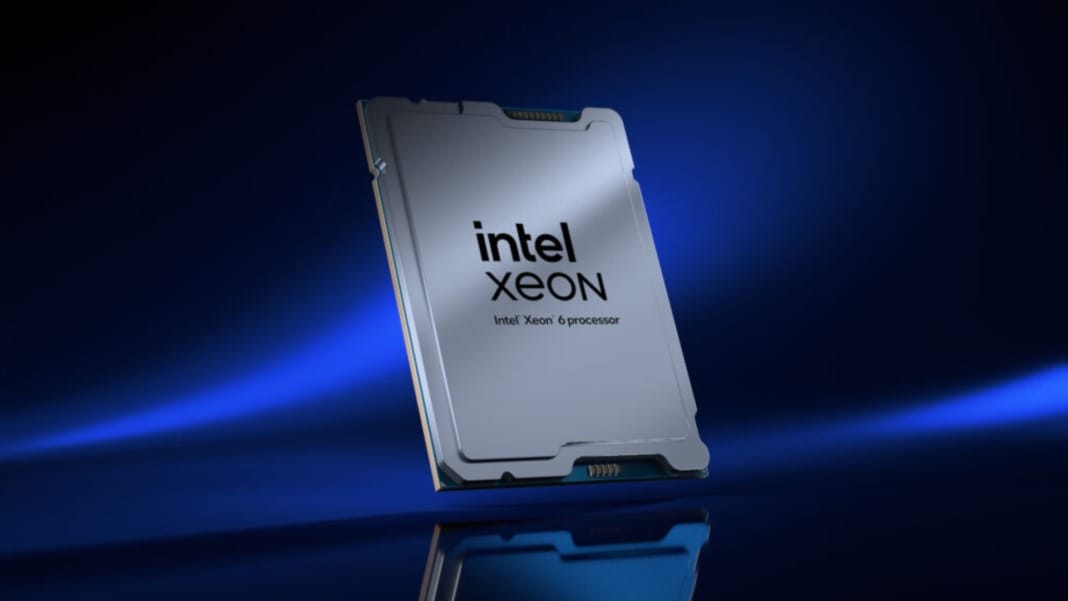Intel has announced the release of three new additions to its Xeon 6 processor line-up, all equipped with Performance-cores (P-cores) designed to power the most advanced GPU-accelerated AI systems. The new chips, which include the latest Intel innovations such as Priority Core Turbo (PCT) and Speed Select Technology – Turbo Frequency (SST-TF), are available now and mark a significant step forward in optimising AI workload performance.
These CPUs are engineered to improve how central processing units manage and support GPU-intensive environments. Among the new processors, the Intel Xeon 6776P has already been integrated into NVIDIA’s recently launched DGX B300 AI system, where it plays a central role in orchestrating data flow, managing operations, and maintaining system performance. This collaboration highlights how Intel’s latest chips are being adopted at the highest levels of AI infrastructure.
Improving performance with smarter core prioritisation
A key innovation in these new processors is the Priority Core Turbo technology. This feature allows the CPU to prioritise selected cores, enabling them to operate at higher turbo frequencies. Meanwhile, other cores continue at their standard base frequency, creating an efficient and intelligent distribution of CPU resources.
This method is particularly important for workloads that rely on sequential or serial processing. By ensuring the high-priority tasks have access to faster processing speeds, the CPU can feed data to GPUs more quickly, which improves the overall performance and responsiveness of AI models.
Alongside PCT, the inclusion of Intel’s SST-TF allows for customisable core frequencies, letting users tailor performance based on specific application needs. These capabilities are central to the processors’ ability to support modern AI systems that require both speed and adaptability.
A feature-rich platform for AI acceleration
The Xeon 6 processors offer a range of performance enhancements aimed at making them ideal for data centres and enterprise-grade AI deployments. Each CPU can contain up to 128 Performance-cores, providing the kind of high-density compute power needed to run large-scale models and data-heavy applications.
Intel also claims a 30% improvement in memory speeds over competing products, thanks to the use of advanced MRDIMMs and support for Compute Express Link. The increased bandwidth is essential for handling complex AI datasets in real time.
In terms of input/output performance, the new chips feature up to 20% more PCIe lanes than previous Xeon models. This enables faster data transfers between components—crucial in environments where speed and throughput are essential. Reliability and serviceability have also been prioritised, with features designed to minimise downtime and support mission-critical operations.
Importantly, the CPUs support Intel Advanced Matrix Extensions, which include FP16 precision arithmetic. This provides enhanced capability for preprocessing and other core tasks within AI workflows, further cementing these processors’ suitability for modern machine learning and data analysis pipelines.
Strong partnership with NVIDIA
Intel’s collaboration with NVIDIA has brought immediate application for the Xeon 6 series. The inclusion of the Xeon 6776P in the NVIDIA DGX B300 system is a clear demonstration of how the two companies are working together to deliver top-tier AI solutions. According to Karin Eibschitz Segal, corporate vice president and interim general manager of the Data Center Group at Intel, “These new Xeon SKUs demonstrate the unmatched performance of Intel Xeon 6, making it the ideal CPU for next-gen GPU-accelerated AI systems. We’re thrilled to deepen our collaboration with NVIDIA to deliver one of the industry’s highest-performing AI systems, helping accelerate AI adoption across industries.”
With growing demand for energy-efficient and scalable AI infrastructure, Intel’s Xeon 6 processors appear well-positioned to meet the evolving needs of enterprises. As organisations adapt their systems to manage increasingly complex workloads, Intel’s latest release offers a compelling mix of speed, reliability and adaptability.





